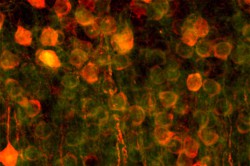A novel mathematical approach for the analysis of multiplexed neural codes
The neural code describes how brains translate external stimuli into patterns of neural population activity. A collective pattern of signals, it determines the relationship between neural response and stimulus. Specifically, neural encoding investigates the link from the stimulus to the particular neuronal response, whereas neural decoding does the opposite. Information is represented and transmitted in the brain by the electrical activity conducted by action potentials among the nerve cells, known as neuronal firing or ‘spike firing’. The temporal code is the identification of the precisely timed temporal patterns of neural activity that carry the most information about external stimuli. Researchers with the ETIC project designed novel computational and optical techniques to measure with a much greater accuracy and temporal precision the patterns of spikes emitted by neurons, by combining sophisticated scanning algorithms and advanced microscopy. Cracking the neural code using novel computational approaches “Our long term goal is to discover how circuits in the brain encode information regarding the external world and use it to generate appropriate behaviours,” says Dr Stefano Panzeri, the project coordinator of ETIC, a Marie Skłodowska-Curie fellow, together with Dr Fellin, the co-principal investigator of this project. This project contributed to the development of optical technology to monitor the activity of many neurons. Unlike prior technologies, ETIC technology has a higher temporal precision and improved signal-to-noise ratio (SNR). The design of a new algorithm enabled researchers to scan the neurons more efficiently, leading to a more precise monitoring of their activity with regard to the SNR. “We also have demonstrated in real experiments, using two photon microscopy of the living, functioning brain that the practical implementation of our algorithm greatly improves the SNR in population imaging with regard to standard state of the art commercially available scanning methods,” adds Dr Panzeri. Future therapeutic applications for neuronal diseases The next step of this project will be to systematically use this new tool to observe the living brain performing cognitive tasks, and to use the new data with higher temporal resolution and larger SNR over several populations of cells. “Once we discover the code that neurons use to encode sensory information, we aim to understand how to manipulate neural activity with optogenetics in order to elicit the neural patterns that correspond to different perceptions, such as different sounds, odours or tactile sensations,” states Dr Panzeri. Optogenetics is a specialised technique that uses light to control the electrical activity of cells in living tissues, and enables control of spikes in individual neurons. More specifically, optogenetics induces very precise patterns of spikes in the brain. The future prospect for this technology is the manipulation of the neural code to create artificial sensations for therapeutic application in patients who have lost the use of peripheral sensory organs but still have a cerebral cortex they can use to process input from the senses. Successful application of optogenetics to evoke sensation requires the identification of a novel theoretical framework that characterises both how information is encoded in patterns of neural activity and how the brain interprets it in order to evoke a sensation. “We are currently working to develop such mathematical technology and are exploring the potential of our technology for product development in a commercial setting,” concludes Dr Panzeri.
Keywords
ETIC, neural code, SNR, optogenetics, neural activity

